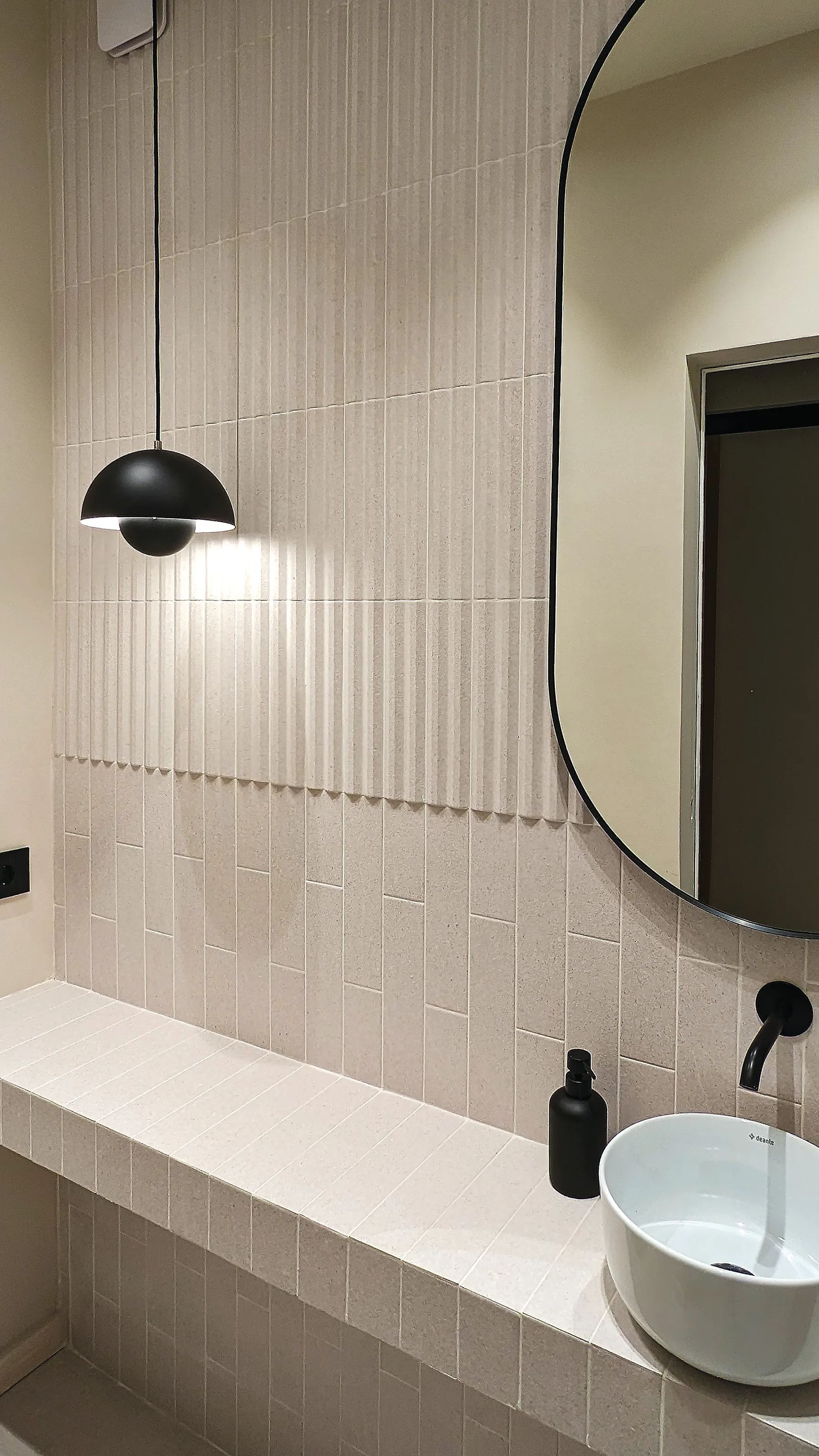
See the Light: Your Home Lighting Guide
November 2024
Article and photos by Renata Haidle
Lighting does more than illuminate your home. It shapes the mood, defines the ambiance, and influences our emotions. Selecting the proper lighting for each room is key to crafting a comfortable, inviting, and visually appealing space. Let’s explore the essential factors to consider when choosing your lighting fixtures.
We are fortunate that lighting technology allows us to have full control of our environment and the feeling and emotion it achieves.” - Lauri Patterson, Owner, One Source Lighting
Color Temperature
The color temperature of light is measured in Kelvin (K). Warmer lights (2700K-3000K) tend to be yellowish or orange, creating a cozy and inviting atmosphere, while cooler lights (4000K-6500K) are whiter or bluish, offering a more focused and energizing feel.
Choose warm-toned fixtures like pendant lights or floor lamps for a relaxed and inviting living room. Consider adding dimmer switches to adjust the brightness according to the mood. A soft, warm glow is ideal for creating a restful atmosphere in the bedroom. Opt for bedside lamps with warm-toned bulbs, and consider installing dimmers for nighttime reading. Bright, cool light is important for task-oriented activities like cooking. Overhead fluorescent or LED fixtures provide ample illumination. Under-cabinet lights add task lighting, while island strip lights can offer a hint of warmth. A combination of warm and cool lighting can create a welcoming ambiance in the dining room. A central chandelier offers general illumination and can serve as a focal point, drawing attention to the dining table and setting the room’s style - classic, modern, or eclectic.
Lumens and Lux
Lumens measure the total amount of light emitted by a bulb, while lux measures the amount of light falling on a surface. The ideal brightness for a room depends on its size, purpose, and the ambiance you want to create.
A comfortable brightness level for living rooms and bedrooms is typically around 50-150 lux. “When selecting lighting for your bedroom, Laurie Patterson, Owner of One Source Lighting, recommends lighting in layers. “Having a combination of multiple light sources creates an environment that adapts to our needs. Whether it is for reading in bed, resting, or day-to-day living, having a combination of bedside lighting, overhead lighting, and oftentimes indirect lighting allows you to adjust accordingly.”
Brighter lighting is needed for task-oriented activities in kitchens and bathrooms. Aim for 300-500 lux. Adequate lighting is crucial for reading and working in home offices. A minimum of 500 lux is recommended.
The size and number of fixtures should match the room’s dimensions. Too few fixtures can create dark spots, while too many can be overwhelming. Consider a combination of overhead fixtures and smaller accent lights to provide even illumination in large rooms, such as open floor spaces. A single overhead fixture or a few wall sconces may suffice in small rooms.
Smart lighting systems offer convenience, energy efficiency, and enhanced control. Integrating with home automation systems allows you to create custom lighting scenes, schedule lighting, and even control your lights remotely—sometimes with just your voice.

Creating a Cozy Atmosphere
You might have heard of hygge, a Danish concept emphasizing comfort, coziness, and well-being. This sense of warmth at home can be achieved through thoughtful lighting choices. Consider incorporating the following elements:
Use a table lamp next to your favorite reading chair, warm light strips under kitchen cabinets, and dimmers on ceiling lights to create a cozy atmosphere. Combine overhead fixtures, table lamps, and floor lamps to create a multi-dimensional lighting scheme. Use sheer curtains or blinds to let in as much natural light as possible. Add a touch of warmth and ambiance with candles or lanterns.
Additional Considerations for Lighting Your Home
Opt for energy-efficient lighting options, such as LED bulbs, to reduce energy consumption and save money on utility bills. Consider installing dimmers in various rooms to control the brightness of your lights and create different moods. Use reflective surfaces like mirrors and white walls to bounce light around your room and enhance natural illumination. Choose lighting fixtures that are easy to clean and maintain. Ultimately, the best lighting for your home is the lighting that you find aesthetically pleasing and reflects your style.
Specific Room Considerations
A combination of overhead and task lighting, such as vanity lights, is ideal for bathrooms. Consider using waterproof fixtures for areas near water sources. Lauri of One Source Lighting explains, “By having different light sources, we are able to use just one or multiple depending on the function at hand. For example, middle-of-the-night journeys require much less light than shaving. We also always recommend dimmers on anything that can be dimmed.”
A well-lit hallway can improve safety and create a welcoming atmosphere. Overhead fixtures or wall sconces are suitable options. For outdoor areas, choose weather-resistant fixtures and consider using motion-activated lights for security.
Create a festive atmosphere using string lights, lanterns, and other decorative lighting. Set the mood for parties with colorful lights, disco balls, or uplights. Relaxation and meditation: Create a calm and serene environment with soft, warm lighting and candles, or consider specialty lights like Himalayan salt lamps.
By carefully considering these factors, you can design a lighting scheme that enhances your home's beauty, functionality, and comfort and reflects your unique style and preferences.
Originally printed in the November 2024 issue of Simply Local Magazine
Never miss an issue, check out SLM's digital editions here!





